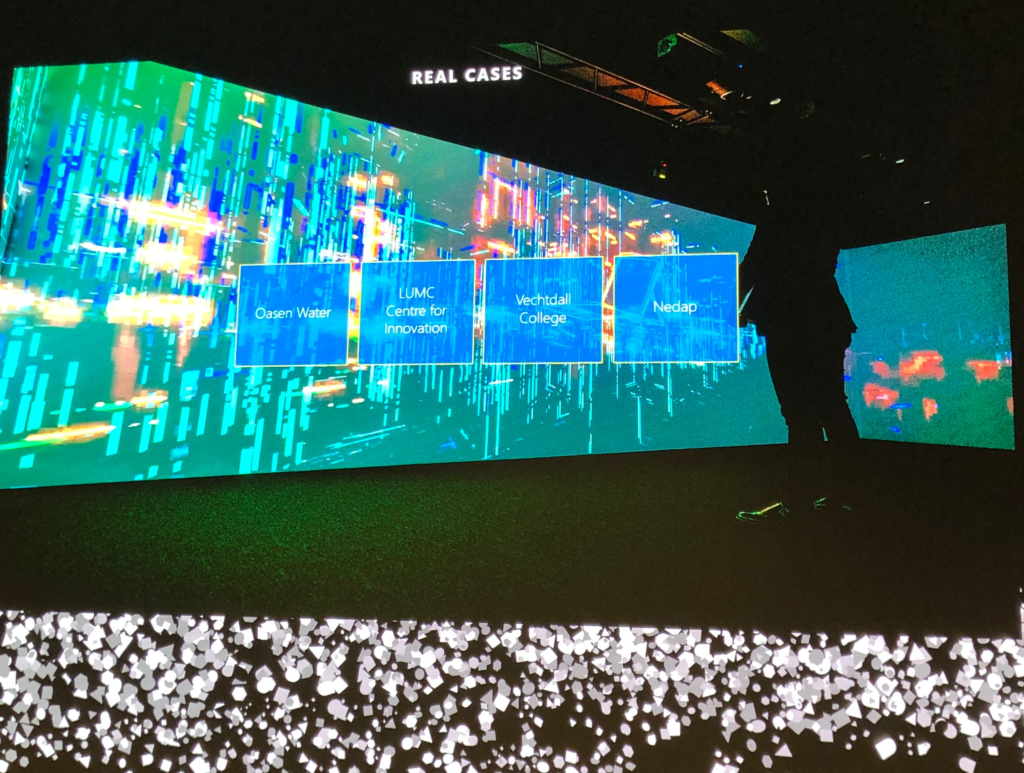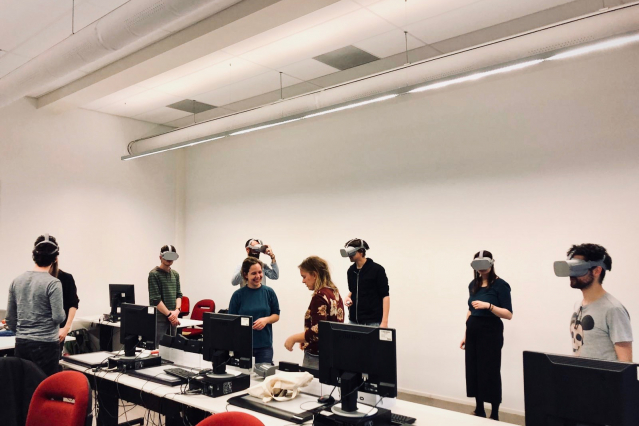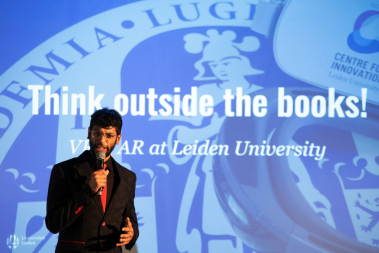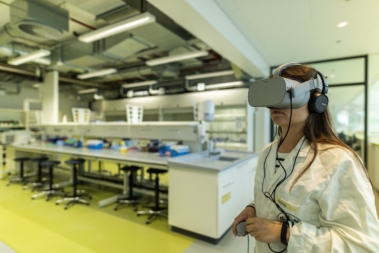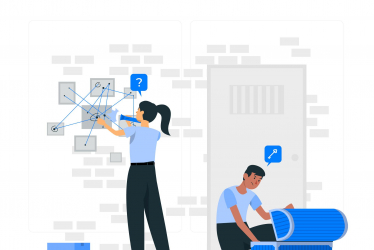Projects
Bringing Anatomical Models to Life: Dynamic Anatomy on the Microsoft Hololens
What is the significance of ‘mixed reality’ (a blended form of virtual reality and real-life) for medical education? And how can 3D technology enhance learning experiences? These were the leading questions for a team comprised of staff from Leiden University’s Centre for Innovation and Leiden University Medical Center, led by Dr. Beerend Hierck. The initiative explored how the Microsoft HoloLens could be used to introduce new ways of teaching and learning human anatomy. The exploration resulted in the award-winning application ‘DynamicAnatomy’.
Why use mixed reality? Traditionally students primarily use 2-dimensional resources to learn about anatomy. They learn from books, computer screens, tablets, and cell phones. However, in daily practice, medical doctors require 3-dimensional knowledge to fully understand their patients’ anatomy and medical conditions. With this application, we researched how to close the gap between 2D learning and 3D practice. Moreover, to discover how education can benefit from technology-driven innovations that are designed around 3D learning, such as the Microsoft HoloLens.
Using your body as learning tool
DynamicAnatomy took an entirely new approach to implementing Augmented Reality by pairing the 3D ankle projection with the movement of the ankles of the students through motion tracking. This enables students to effectively learn the anatomy of their lower leg with the function of their own ankle joints in a realistic 3D environment.
The inspiration for DynamicAnatonomy came from two places: a HoloAnatomy application from Case Western University, and a Dutch football player—Marco van Basten—who had numerous ankle injuries during his career. The DynamicAnatomy development team combined technology and storytelling in order to embed the experiment in a larger learning experience based on concrete medical cases. Through this process, we discovered that using mixed reality for education makes education more adaptive and personal. On the technical side, students can study the simulations in their preferred manner due to the nature of holographic 3D projection. Additionally, the HoloLens adds an affective component to the study of abstract models by allowing the students to take ownership of their learning experience.
Beerend Hierck, an anatomy teacher and researcher at LUMC, is currently applying the app in his classes. In his experience, students immediately start experimenting and become highly engaged in their learning because they are able to explore the body model in relation to their own movements. In addition to implementing the app in the classroom, Beerend is researching best practices for teaching and learning with DynamicAnatomy. So far, the most obvious added value emerges in the application’s impact on personalised learning and the ways in which it facilitates a mental translation between 2D learning to 3D practice. The application is especially effective for students who are challenged by 3D spatial abilities. This research is in progress by LUMC (Bogomolova et al.), and we look forward to continued insights into how Augmented and Mixed Reality can enhance teaching and learning.
Winner Innovation challenge
The Centre for Innovation and LUMC won the Surfnet Innovation Challenge 2016/ 2017 with our idea for ‘DynamicAnatomy’. SURF is an ICT teaching and research collaboration in the Netherlands. The aim of their annual Innovation Challenge is to stimulate innovation in teaching. The best proposals were each honoured 20.000 euros to realise the experiment. The initial application was built with Microsoft Partner ‘InSpark’. The application makes use of an anatomical correct body model from Zygote.
Leading by example in world’s first Holosuite
In November 2019, Microsoft launched a brand new experience with the ‘Holosuite’, a fully immersive 360º industry projection facility, with state-of-the-art HoloLens mixed reality experiences. Leiden University, CFI and LUMC are privileged to be part of one of the first examples of how mixed reality can be used in different industries, in our case education and health. We were invited to demonstrate the DynamicAnatomy app at the Holosuite because it exemplifies the strength of mixed reality for education and the potential of learning in 3D. Two other AR applications created by the Centre for Innovation and LUMC (AugMedicine: Lung and Transplant cases) are also mentioned in the Holosuite as example of enhancing education with mixed reality and 3D learning.
Project milestones: acknowledgements & results
- CFI and LUMC win the SURF Innovation Challenge 2016/17, and start together with tech partner InSpark developing a proof of concept;
- Dr. Beerend Hierck presents a TED talk on the project as finalist in the TEDX AmsterdamEd awards;
- A working proof of concept with motion tracking based on the Xsens body suit is ready, the project results are delivered at SURF and Leiden University;
- The app ‘DynamicAnatomy’ is downloadable in the Microsoft Holostore for free;
- Educational Minister van Engelshoven visits Leiden University and sets DynamicAnatomy as example in the policy debate on digitisation of education;
- A new version of the app is built, implementing a more scalable motion tracking solution based on HTC Vive trackers;
- Dr. Beerend Hierck wins the special jury prize of the Medea awards from Media & Learning Association and is acknowledged especially for its excellent pedagogical design;
- Imperial College London and LUMC collaborate on world-leading AR assessment;
- Research on 3D learning and spatial abilities by Dr. B.P. Hierck;
- Launch of DynamicAnatomy as showcase in the Holosuite at Microsoft’s Customer Experience Centre in Amsterdam.
We work with educators and students to make AR and VR applications to enhance learning. If you’re interested in learning more, please get in touch.
Get in touch with the author

Leontine van Melle
Project Design & Delivery
l.r.van.melle@sea.leidenuniv.nl


